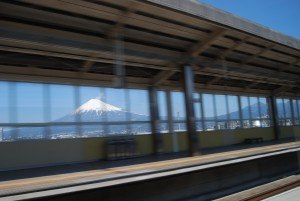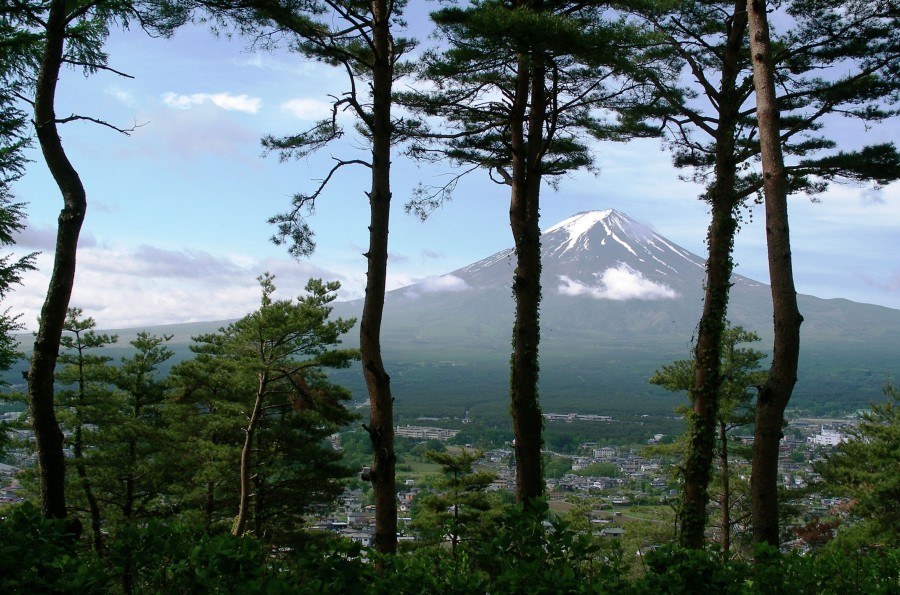Like this post? Help us by sharing it!
Many may find it hard to understand why so many people make this gruelling trek up crowded hillsides in the freezing cold through thin air only to wait for a sunrise that may or may not penetrate the dense clouds that stick to Mt. Fuji throughout much of the year. Fortunately, the Japanese have no such difficulty. For them, climbing Mt. Fuji is a pilgrimage up sacred slopes to the symbolic heart of their homeland. The Japanese will be the first to tell you that there is much more to climbing Mt. Fuji than simply reaching the peak. On this sacred volcano it is the journey and not merely the destination that make this a truly once-in-a-lifetime experience.

Working as a Tour Leader, I have taken hundreds of tourists from all over the world to the far corners of Japan. To steaming hot springs in Shikoku, meandering back streets in Nagasaki, and geisha filled teahouses of Kyoto. But I have yet to find a destination that fills people with more awe, more respect for nature, and an overall closeness to Japan and the Japanese people than a trek to the sacred peak of Mt. Fuji. IJT has welcomed the Mt. Fuji climbing season with a brand new group tourdesigned for those intrepid souls looking to climb Japan’s tallest peak.

Starting your climb from 2,300 metres above sea level at a mountain shack serving tea and selling walking sticks the locals send you on your way with cheers in Japanese of “good luck” and “come back safely”. Once you set foot in the dense forest that covers the bottom half of Mt. Fuji you will find yourself amongst fellow climbers, the vast majority of which are Japanese, all interested in what brought you here. It is impossible not to get caught up in the excitement of families on summer vacation or couples from Tokyo who have taken a rare few days off work to come to Fuji-san, the highest point in Japan. Whether it be in old wood-block prints or the backdrop to an Akira Kurosawa film, Mt. Fuji’s graceful silhouette has firmly taken hold of the hearts of foreigners and Japanese alike for as long as they have set eyes on it.Masses flock to Mt. Fuji every year, but you will be hard pressed to find pieces of litter spoiling this holy ground. Even the foreign tourists who come here can sense that there is something special about Mt. Fuji and, in the Japanese spirit, take special care to protect what nature has left for them.
Creeping ever closer to the mountain’s crater you will pass hut after hut, each offering a place to sleep or a bowl of noodles to weary pilgrims in need of a rest. As the air thins, so too do the trees, and you are left with sweeping views of the plains stretching out from Mt. Fuji’s base. Late in the afternoon the sun sets and turns the clouds, which are now far beneath you, a brilliant orange and you realise that it is time to take refuge from the night in one of the mountain huts dotting Mt. Fuji’s hillside. Leaving your hiking boots at the door and stepping on to a straw woven ‘tatami’ mat to be greeted by a deep bow is a sensation that can be found only in Japan and something that you will take away with you long after you have returned home. Sitting down for dinner with 30 Japanese pilgrims, it is understandable that the menu is limited 3,000 metres above sea level, but with a choice of Japanese curry and ramen noodles it’s hard to complain. Off to bed.
The few hours of sleep before waking up to watch sunrise are done on bunks lined with Japanese futons and large heavy blankets shared by 5 or more people. Rows of climbers are packed neatly next to one another and you may well find yourself sharing a blanket with a group of school kids or a family of four. At about 2 am an exodus of climbers begins, and the pitch-black trails of Mt. Fuji are filled with torch-clad climbers braving the cold mountain air. The moon and stars gently light the trail as you pass through Shinto Torii gates on your journey towards the peak. When the sky begins to brighten with the promise of a rising sun the crowds stop and turn their backs to the mountain to watch a perfectly round sphere rise above thin morning clouds and over lake filled plains. The already red and barren volcanic landscape is turned a brilliant orange and Japanese cheers of “Bonzai!” can be heard piercing the quiet morning air.
There are many trails leading to the top of Mt. Fuji and, depending on which one you take, you may be met by a Shinto Shrine stamping people’s walking sticks with a rusty-red ink or by a tiny post office sending postcards from the roof of Japan to all corners of the world. The one-hour (4km) journey around Mt. Fuji’s massive crater is the perfect reminder of how massive this volcano really is, but it isn’t until you descend that you begin to realise just how special an experience you have been privy to. A rare opportunity to be accepted in to the fold of Japanese culture and a glimpse at a side of Japan that most travellers here don’t even know exist.



